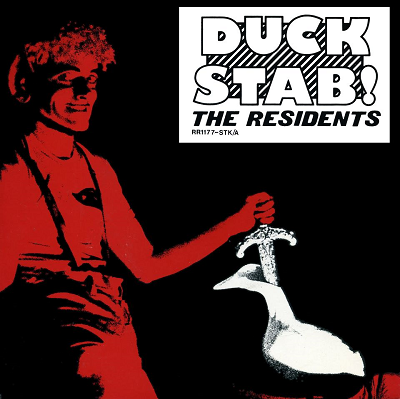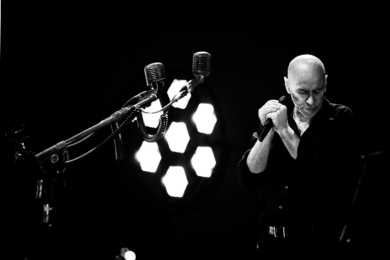4. The ResidentsDuck Stab

This was originally an EP. Then The Residents expanded it to be an album with another EP, Buster & Glen, which was supposed to be the following EP, but they basically combined them to make an album. It was around 1978 and I’d been working in a Soho recording studio for about a year. I left school very young and was working in Soho at 15, so that’s quite unusual really. And I was being exposed to quite a lot of experimental music by my brother and one of the guys that I worked with in the studio, and I’d go to a lot of gigs and listen to a lot of radio. I guess it must have been the John Peel show where I first heard Duck Stab, which blew my mind, because at this stage I was heavily into ‘Revolution No.9’. I was very much into tape recorders and looping and sound effects and playing around in the studio. So when I heard Duck Stab, I needed to get a copy of it, and I remember my brother Andrew bought me a copy as a gift, which was very timely.
And I couldn’t stop listening to it. It was such a huge influence on the early The The sound. Listening to it again, it’s really the guitar work by Snakefinger. He’s probably the biggest influence on me as a guitarist along with Michael Karoli from Can. Snakefinger’s sound was massively important on songs like ‘Sinister Exaggerator’; his use of open tuning, the rhythms, the slightly discordant sounds and the fuzz boxes, and the bottleneck slide as well… he was a brilliant guitar player. But at the time nobody knew who The Residents were. It was very mysterious. I knew they were from San Francisco and I wrote to their label, Ralph Records, to try to get signed by them. I was only 17, but I’d sent them demos and everything. And I think I’ve still got the letter that they sent back, which was a really lovely, encouraging letter. They’d listened to my stuff and they were very, very encouraging.


